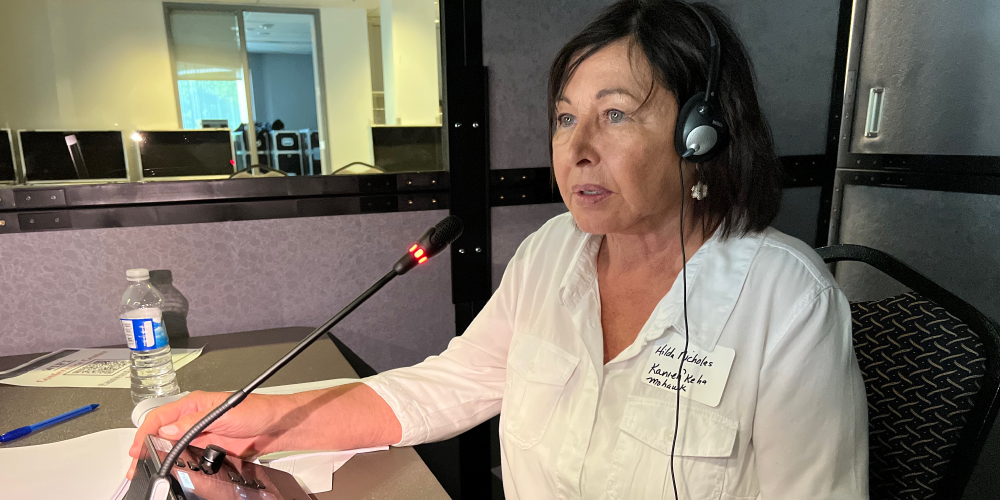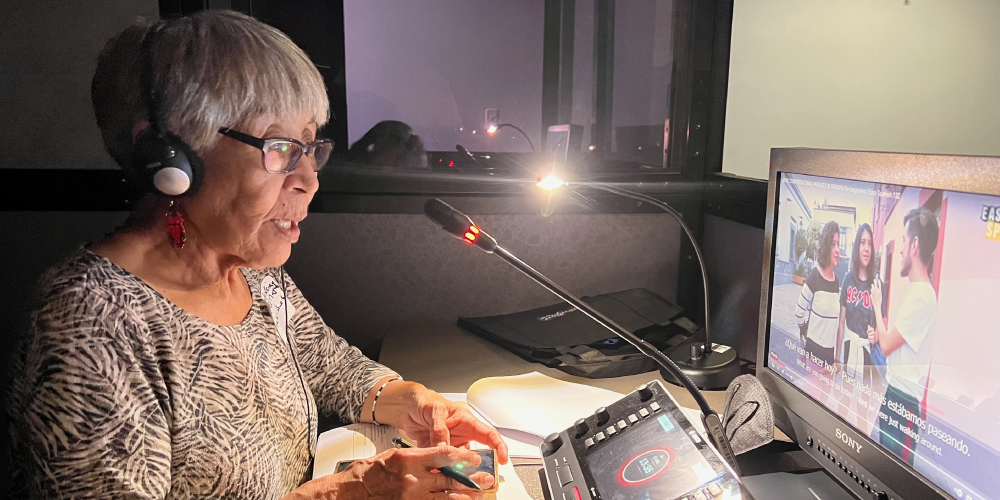Simultaneous interpretation: the magic of words
Language is the very essence of a culture, of a people. However, the diversity of languages can complicate communication. This is when interpreters can use their magic to make communication more accessible and fluid.
Their role was extremely important during Pope Francis' trip to Canada in July. Without the hard and thorough work of dozens of interpreters, the two large masses, the prayers and the speeches, recited in Spanish, would not have been understood by the majority of the Canadian population, especially by the Indigenous Peoples who were directly addressed during this visit.
In addition to the protocol and logistical details that such a visit require, the Translation Bureau of Public Services and Procurement Canada had to recruit interpreters to provide simultaneous translation services. With its expertise and network, the Bureau was able to provide interpretation services in 12 Indigenous languages as well as in Spanish, Quebec Sign Language (LSQ), American Sign Language (ASL), English and French.
Obviously, not all of these interpreters followed Pope Francis everywhere he went. A large part of the team of interpreters was grouped in a studio in Ottawa, from which the large masses and the Holy Father's speeches were interpreted and broadcast.
Writing history and bringing her language back to life

As a Mohawk interpreter, Hilda Nicholas was happy to be part of this historic event. Mohawk is her first language and her family has always spoken it at home. “I grew up speaking the language; when I started school, I didn't speak English.”
At the same time, she hopes the visit will help residential school survivors heal and move forward. Like many Indigenous Peoples, Nicholas has family members who attended residential schools.
“For some people, it's important to take a step forward. I know it takes time, a lot of time to heal. I hope that the changes will continue,” says the director of the language and cultural center in Kanehsatà:ke, her community.
Simona Arnatsiaq is herself a survivor of residential schools in Nunavut. In order to become an interpreter, she had to relearn her language, which she had lost while at the residential school. She interpreted in Inuktitut during this extraordinary event.
According to her, a good interpreter must be quick and knowledgeable, but above all, non-judgmental. “You're just communicating what someone is saying, so it's very important to be neutral, to virtually detach yourself and repeat exactly what is being said,” she says.
Inuktitut is very much alive in Canada and many students are graduating from university with a degree in translation. However, the challenge continues to be gaining experience in simultaneous interpretation.

Languages with a thousand images

Raoul Vollant learned the Innu language, that of the forest, in his early childhood. “I learned it on my parents' ancestral territory in the forest, in nature. I was three, four, five years old. We hunted, ate and slept in Innu.” Despite entering a residential school at the age of seven, he never lost it. “I spoke it in secret to preserve my language,” he admits.
This residential school survivor says he is honoured that his expertise was called upon to interpret from French into Innu. “It was quite an experience.” Nevertheless, the project required several weeks of preparation. “I immersed myself to prepare,” from reading the Pope's speeches to attending Sunday Mass.
Mr. Vollant says that most Indigenous languages have some form of duality. “There is the Innu of the forest and the Innu of the city. When you're in the woods, everything changes, it's mystical,” he explains.
The biggest challenge is translating words that don't exist in his native language. “Simultaneous translation is never perfect. You can't capture everything. You get the context, the tone, the meaning. It takes a lot of concentration. It's up to the translator to find an image that conveys the words. It's like magic.”
The love and pride of the language was there for all the interpreters whether they spoke Mohawk, Inuktitut, Innu or other languages. They all had one goal: to provide Canadians with accessible communication.
With the Translation Bureau's support and its commitment to the revitalization and promotion of Indigenous languages in Canada, Indigenous interpreters were able to participate in this historic event and made Pope Francis' message accessible to residential school survivors, their families and their communities.